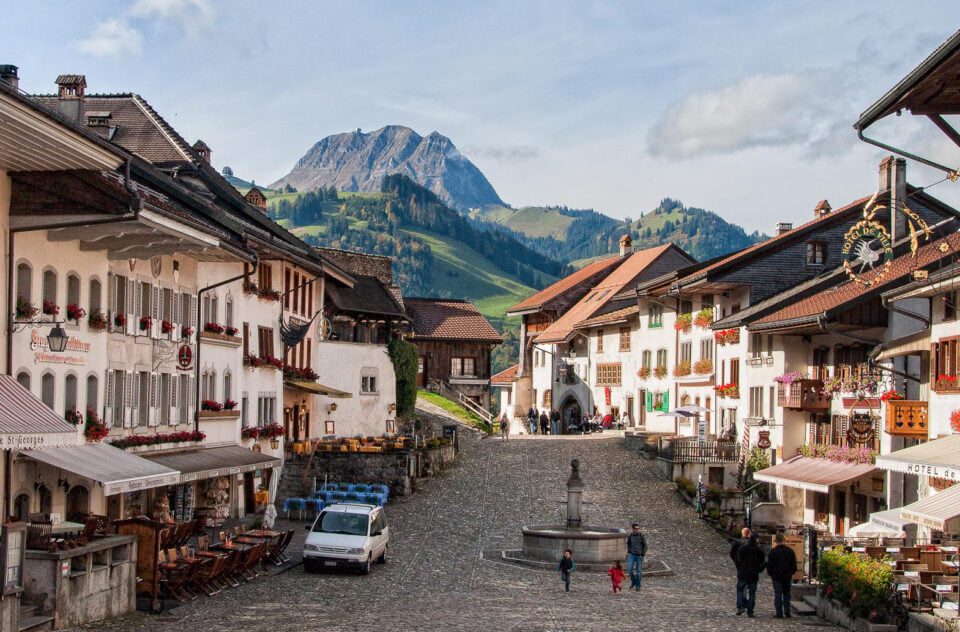There are plenty of places on the world map that look like they came straight out of a photograph, and the small town of Gruyères (Switzerland) is certainly one of them. The picturesque medieval town, which is located on the slopes of a hill at the foot of the Alps, is the birthplace of the famous Gruyère cheese. Thousands of tourists come here every year to stroll along the ancient streets, climb to the top of the hill on a funicular and simply feel the atmosphere of the Middle Ages.
General information
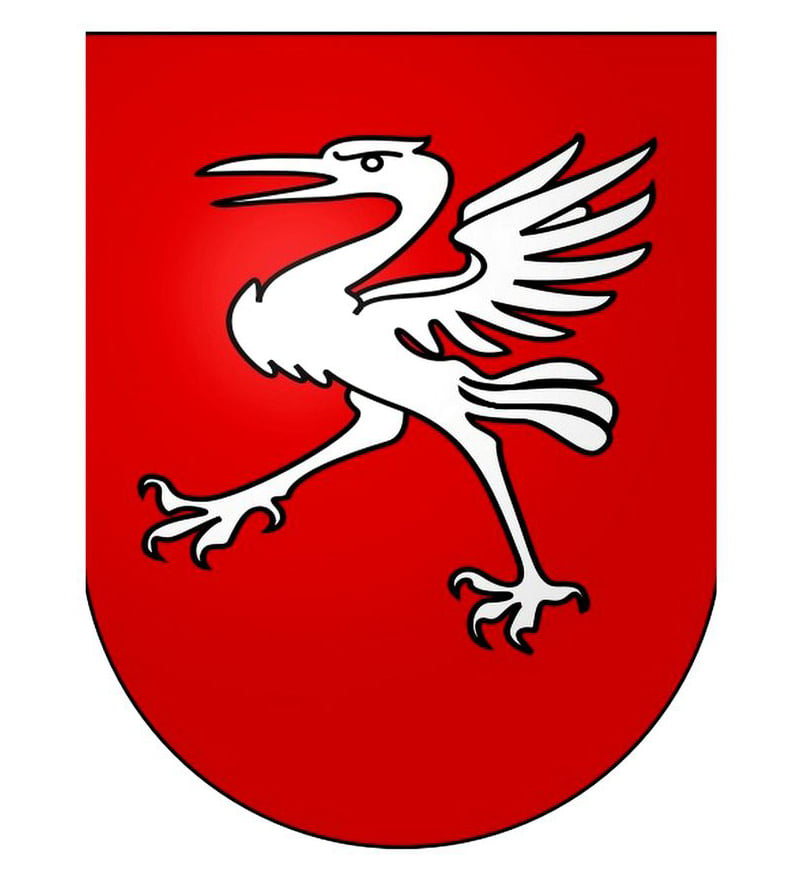
Gruyères is a tiny town in the Republic of Switzerland , where everything is imbued with the spirit of the Middle Ages. Previously, it belonged to the Counts of Gruyères. The family’s coat of arms depicts a crane, which has become an integral symbol of the city. The city was named after the bird, because in translation from French Grue means crane.
Gruyères Castle, which is another symbol of the town and Switzerland, was built in the 11th century in the southern part of the canton of Fribourg (distance from diplomatic Geneva is 116 km, and from the capital of the country Bern – 68 km). A little more than 2 thousand people live on an area of about 28.5 square kilometers.The Legend of the Origin of the Town of Gruyères
The founder of the settlement is considered to be Gruerius, the leader of the Vandals. He was looking for fertile lands where he could found a city. Ascending the banks of the Sarina River, he saw a beautiful place surrounded by mountains and generously illuminated by the sun. The land was uninhabited, but Gruerius decided to lay the walls of the castle here.
According to legend, when the construction was completed, a snow-white crane descended from the sky. The chieftain saw this as a good omen and from that day on the coat of arms of Gruerius and the modern city of Gruyères is decorated with a crane.
Interesting fact! Historians believe that the Vandal leader settled on the hill around 436, however, the first mentions of the settlement date back only to the 11th century, at which time the construction of the castle began and was completed only in the 13th century. It is not known for certain whether the Counts of Gruyères are descendants of Gruerius. Probably, the leader is a fictional character, and the region got its name from the word “gruyere” – forester.
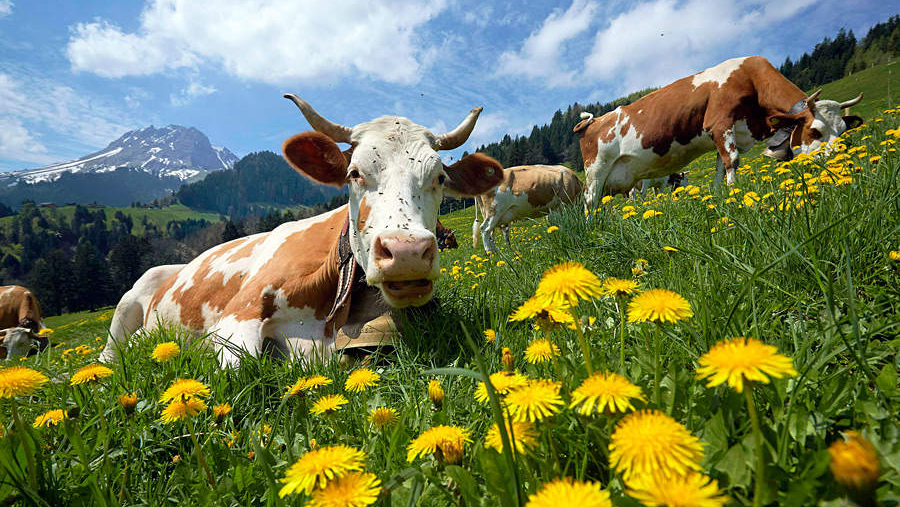
The picture-perfect landscapes of Gruyères in Switzerland are enchanting and serene. The mountain lake is considered one of the most beautiful in the country, and Fribourg cows graze on its shores, producing aromatic milk for cheese and desserts.
Good to know! The city’s residents and authorities are trying their best to preserve the medieval aura, which is why the settlement is closed to motor vehicles.
In addition to the interesting sights that span eight centuries, the city has a fairly vibrant life – guests are invited to restaurants that serve fondue, raclette and, of course, desserts with thick cream.
Gruyère is a gastronomic region of Switzerland, where you can see how cheese is made. Those with a sweet tooth can enjoy a tour of the Cailler chocolate factory, which is located in nearby Broc.
What to do in summer
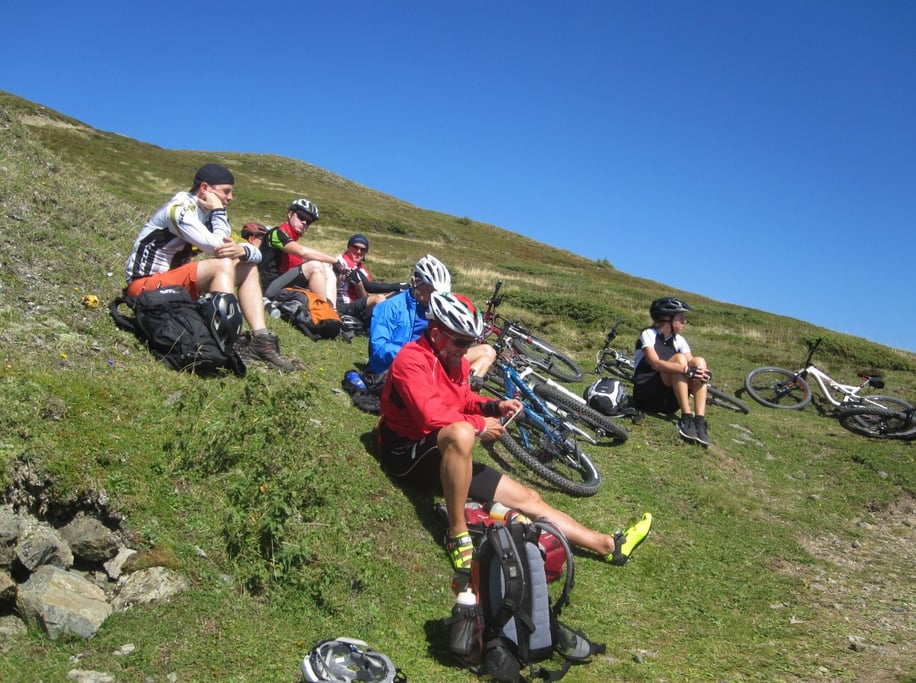
Mountain landscapes attract hikers and lovers of cycling routes. There are many tourist routes here, walking along which you can hear fascinating local legends. There is a path on which sculptures carved from stone with a chainsaw have been preserved.
In summer, the city of Gruyères (Switzerland) offers tourists a variety of active entertainment:
- bobsled descents;
- scooter riding;
- mini golf.
Things to do in winter
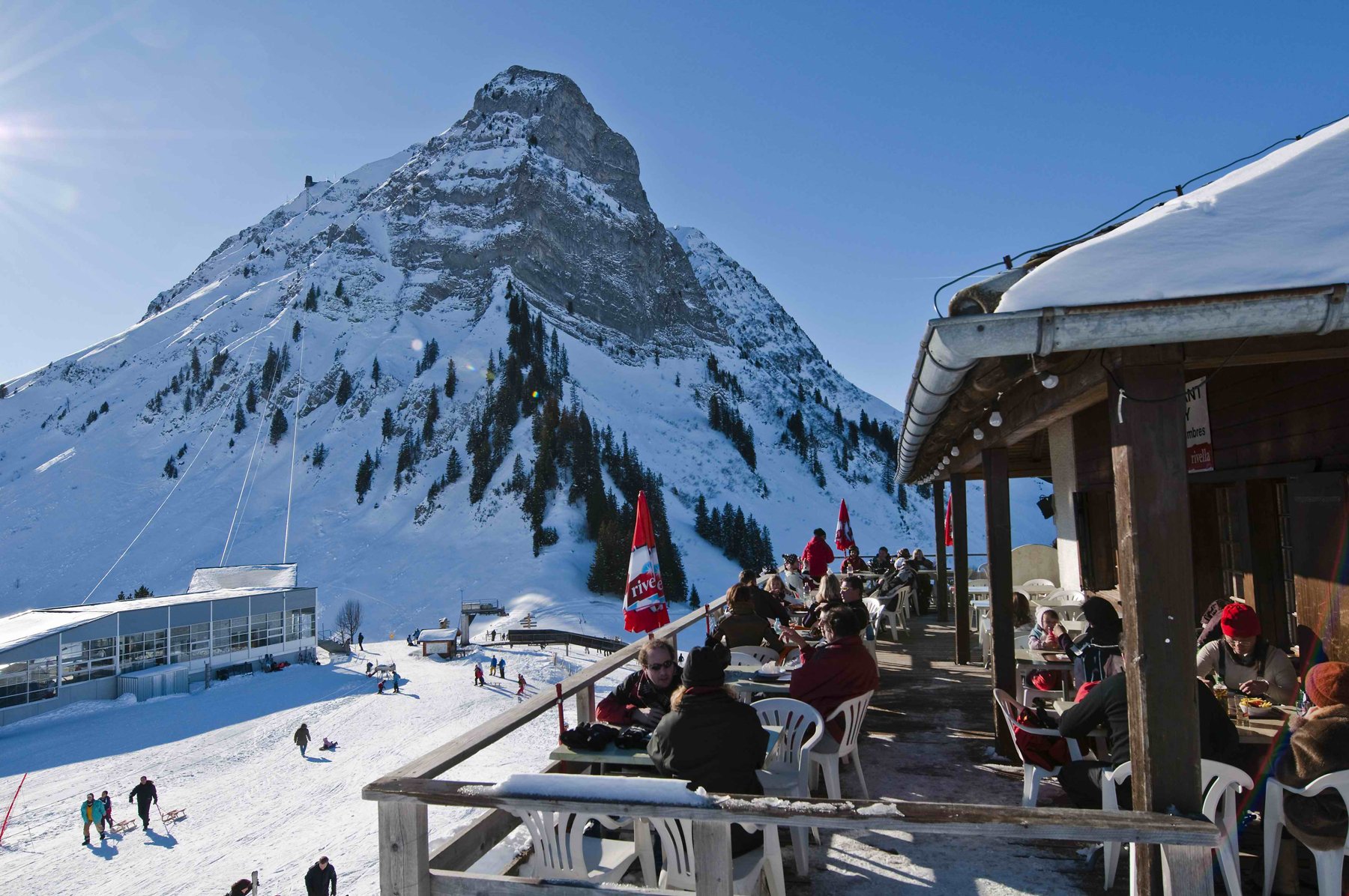
Near the town of Gruyères is the largest ski area of Moléson, the height of the slopes reaches 2003 meters. There are 8 lifts and 35 km of ski slopes of varying difficulty, including for family recreation. At the top of the mountain there is an observatory.
Vacationers take the lift up to Charmey, a resort area where, in addition to skiing, you can enjoy relaxing in the hot thermal springs.
Gruyere Cheese and the Cheese Museum
A visit to this landmark is a must when visiting Gruyères. The cheese factory is located a few minutes from the train station.
Good to know! The tour is included in the Swiss Travel Pass . The full ticket costs 7 francs. This price includes an audio guide and a small package of three types of cheese.
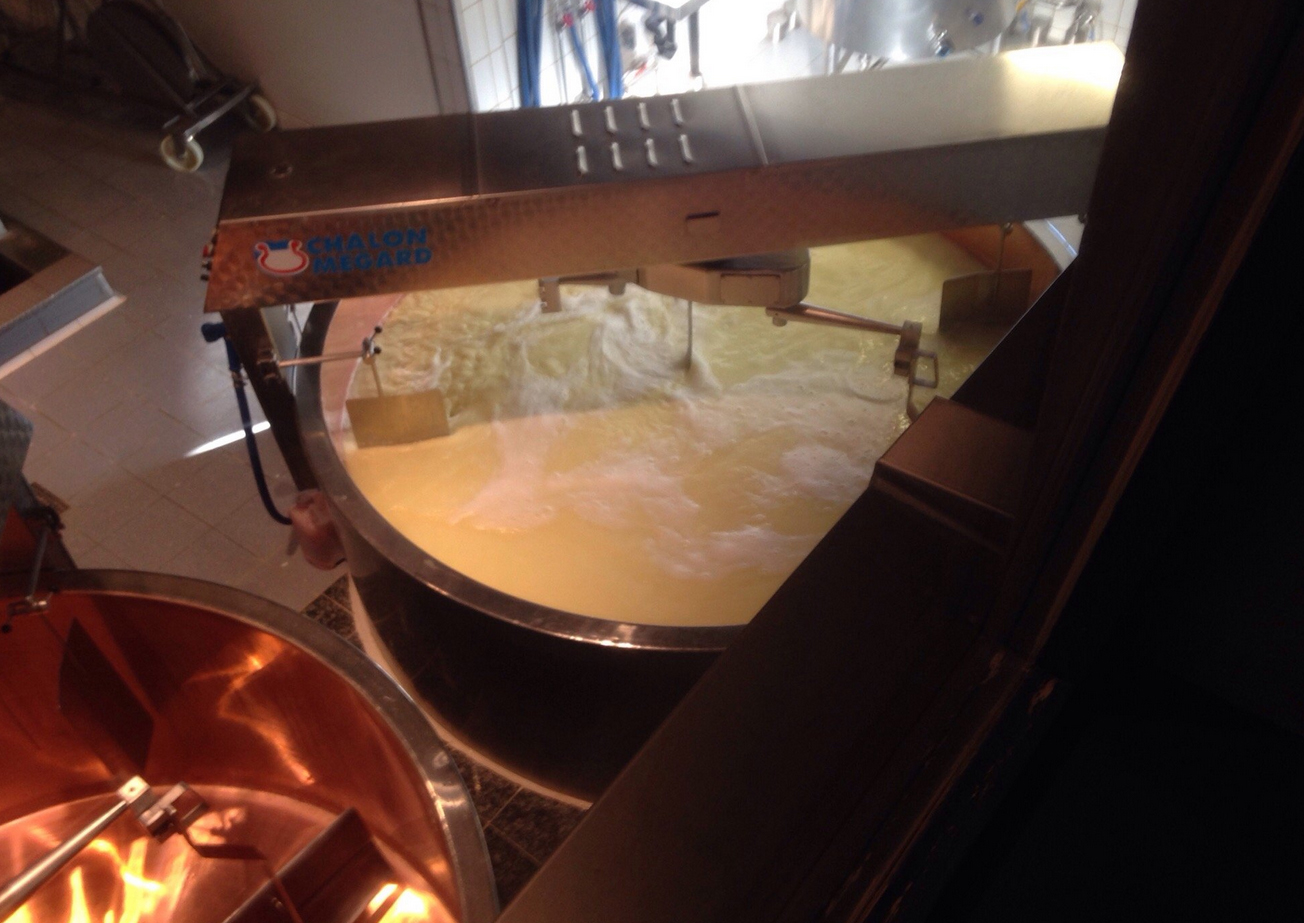
You can watch the production at certain times:
- from 9-00 to 11-00;
- from 12:30 to 14:30.
Many tourists recommend planning a tour in the morning – before 9:00 – to catch the process of product preparation. The museum has interactive video stands, but the impressions are certainly not as vivid as those from visiting the factory.
In the first hall you can smell the mountain grass that the cows eat. The audio guide will tell you that the animal eats up to 100 kg of grass daily and produces up to 25 liters of milk.
Interesting fact! Throughout the entire excursion, an audio guide communicates with tourists on behalf of a cow named Cherry.
The showroom has four vats with a total capacity of 4,800 liters of milk. One container produces 12 heads of cheese, each weighing 35 kg. Before pouring milk into the container, specialists always take a sample.

Milk from the morning and evening milkings is mixed in vats, heated, yeast and a special enzyme are added to start the curdling process, which lasts about 50 minutes. The formed clot is cut with knives located in the vats and heated again at a temperature of 60 degrees for 45 minutes.
Then the mass is placed in special forms, for this purpose a blue hose is used. Under the form there is a container where the whey flows, it is fed to the piglets.
Interesting fact! Despite the fact that the preparation process is regulated, the specialist independently decides when to complete one stage and move on to the next. Thus, the preparation of Gruyere cheese is a creative process. To prepare 1 kg of the product, 12 liters of milk are needed.
The premises are kept spotlessly clean, each vat is thoroughly washed as soon as the cheese mass is removed from it. All the cheese heads are identified, stamped with the production date and the cheese factory number. After that, they are sealed in forms and sent under the press for 15-16 hours. The press weight is 300 kg, but it gradually increases to 900 kg. The process does not end there – after that, the product is soaked in a saline solution for 20 hours.
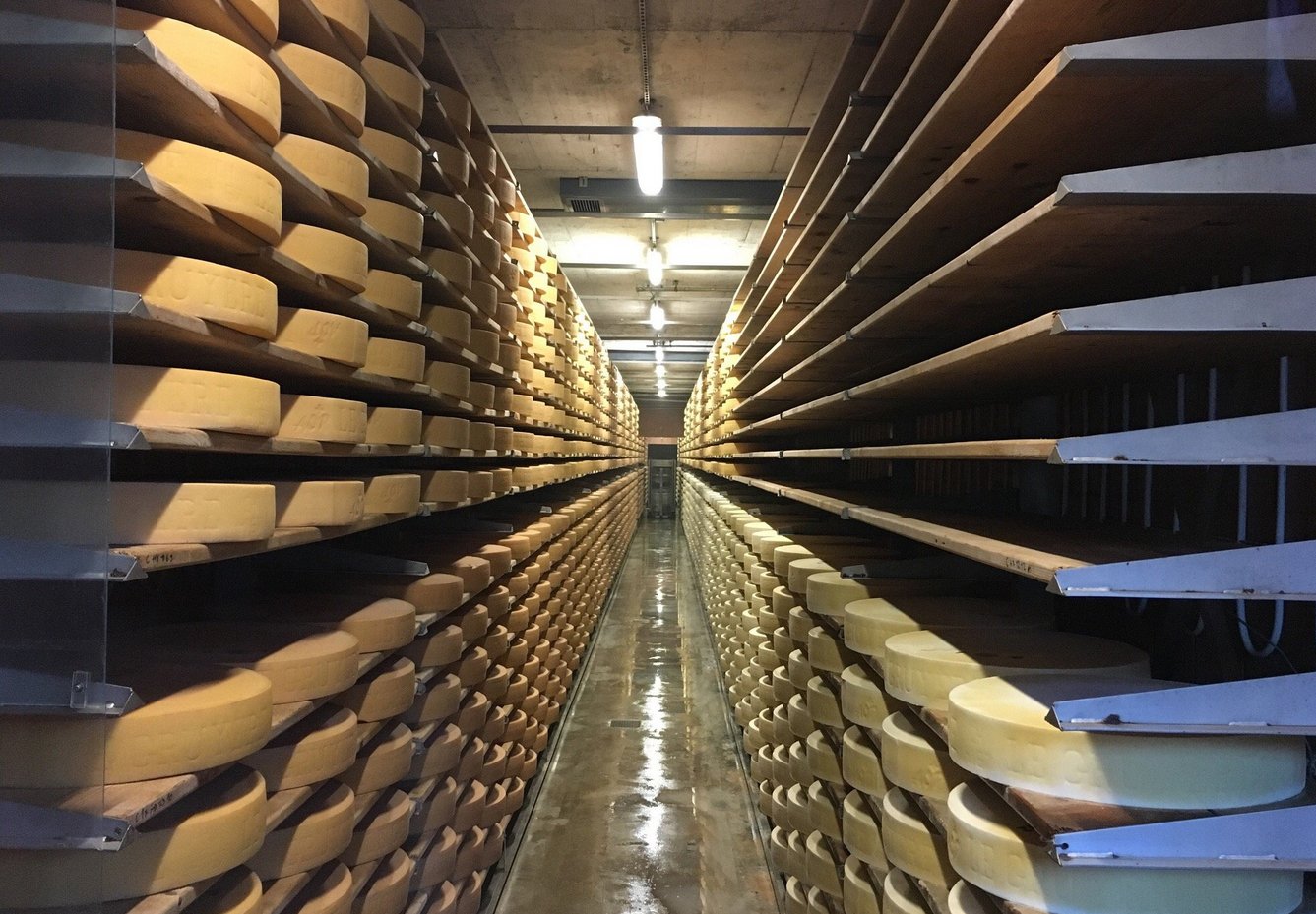
The final stage is maturation in a special chamber where a certain temperature regime is maintained. The characteristic crust appears after three months, after which the cheese is moved to a room where the temperature is maintained at no more than 15 degrees. Here it is stored until sold.
- The museum is located at: Gruyères, Place de la Gare, 3.
- You can visit it daily from 9:00 to 18:30.
- Website: www.lamaisondugruyere.ch.
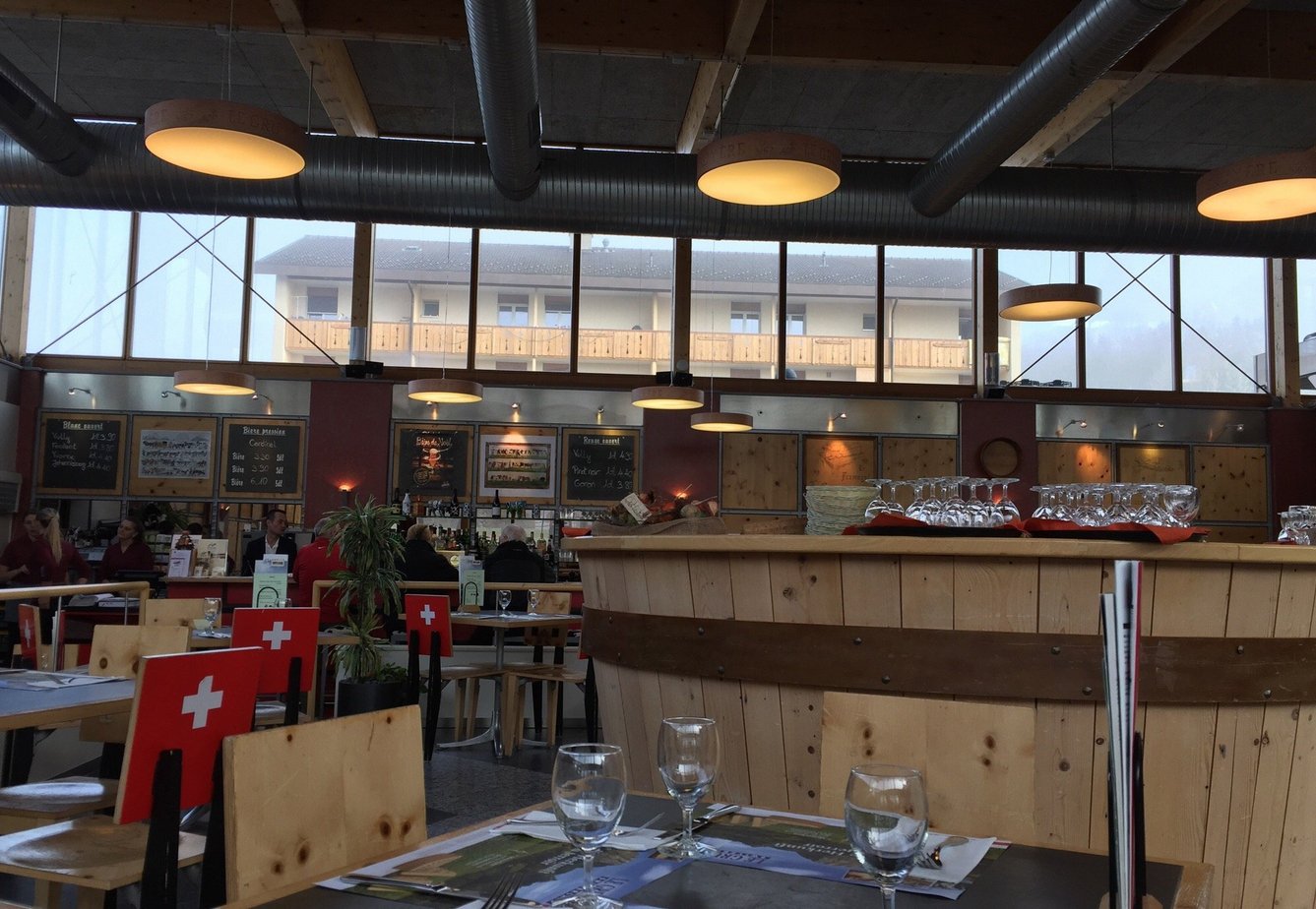
There is a restaurant on the museum grounds, it accepts visitors for a few hours longer. Souvenirs can be purchased in the shop.
Ticket prices:
- full – 7 francs;
- children (up to 12 years) – 6 francs;
- family (2 full, 2 children) – 12 CHF.
Gruyeres Castle
The Gruyères Castle in Switzerland is considered the second most visited castle in the country. The first is the Chillon Palace near Montreux . The castle in the city of Gruyères is built on the slopes of a hill, from where there is a beautiful view of the Alps.
Over the years, the Château de Gruyères was successively occupied by the counts who built it, the bailiffs of Fribourg, and then the Bovy and Balland families of Geneva, before being purchased by the Canton of Fribourg in 1938 and opened to the public.

There are many legends associated with this place, however, historians have not yet figured out the origin of the castle and the county. It is believed that the count’s family settled here in the 11th century, however, the paintings presented in one of the halls of the Gruyères castle tell of the events of the year 400.
Interesting fact! The name of the castle is interpreted in different ways. There are two common versions, according to one of them the name of the castle is associated with a crane, and according to the other – with the French word “gruyère”, which means – hunting area.
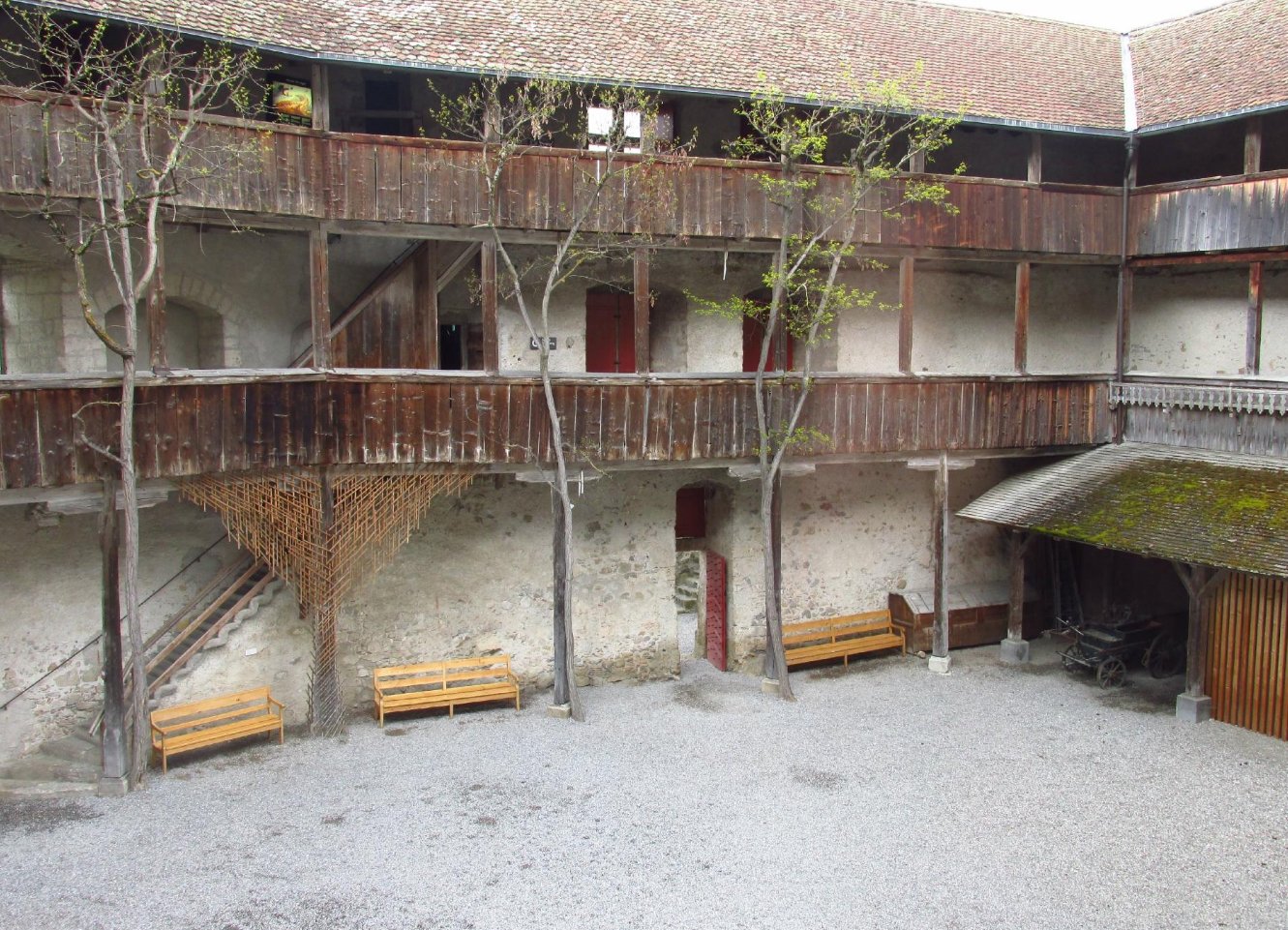
The Counts of Gruyères lived in the castle only until the 16th century, when the family became poor and the building became the residence of officials. During that period, the external and internal decoration changed – elements characteristic of the Baroque appeared. Elegant stone galleries with wide windows replaced part of the wooden galleries, a staircase tower was added to the main block, and a chapel was installed in the former defensive tower.
In the 19th century, the Gruyères castle was almost completely destroyed and was about to be torn down, but it was bought by a wealthy local resident, Mr. Bovy. The new owners carried out a major renovation. The construction work was supervised by Daniel Bovy, who changed the organization and theme of each room in the building. He invited his artist friends from France and Geneva to the summer residence, and everyone took part in creating new decorations. The area adjacent to the castle was also restored.
At the beginning of the last century, the Gruyères castle again became the property of the canton in Switzerland and was turned into a museum. Guests are offered an audio guide. In addition, the castle hosts exhibitions of contemporary painting.
At the end of the 20th century, numerous artists and illustrators exhibited their works in the castle. This gallery displays a selection of their creations, most of which depict Gruyères and its castle.
The palace has preserved various rooms:
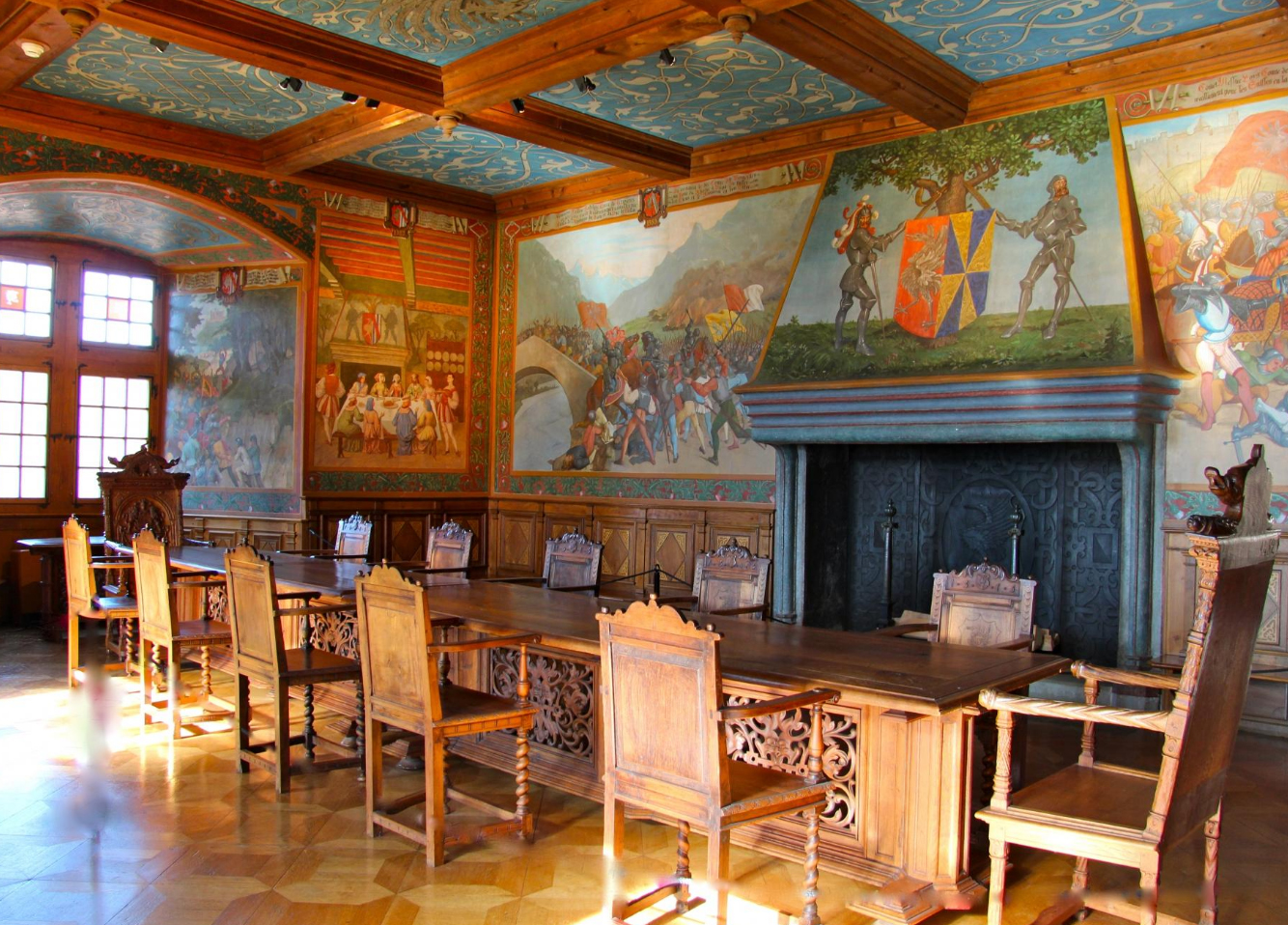
- Count’s Hall;
- kitchen;
- chapel;
- bedroom;
- music hall;
- hunting room;
- room of the count’s favorite.
There is another legend connected with this room: the Count fell in love with a simple girl and even settled her in his castle. However, the legend is silent about how the Count’s legal wife reacted to this fact.
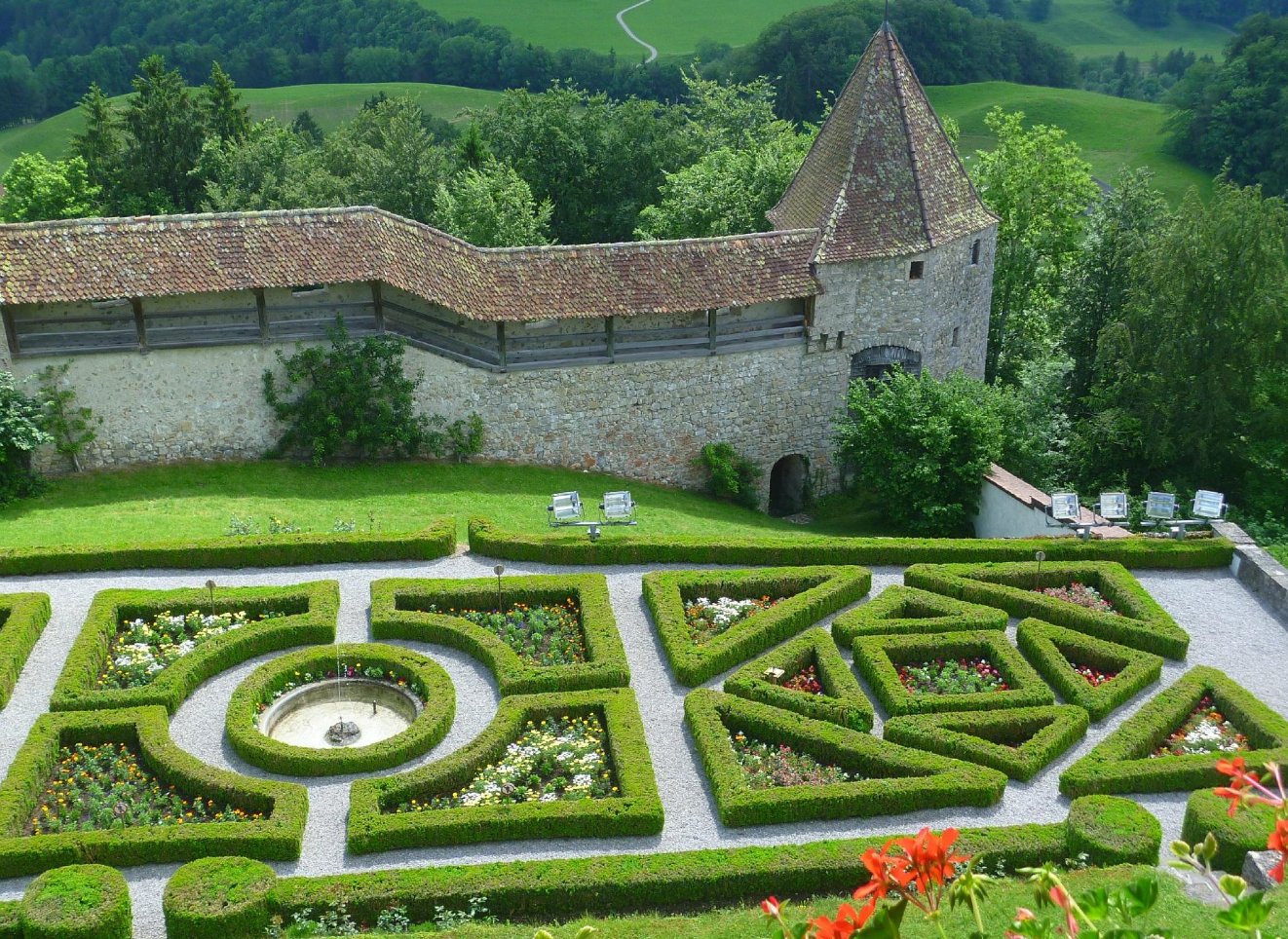
There is a French garden next to the castle, but it is better to visit it in the summer. The castle leaves a pleasant, cozy feeling, you want to come back here again.
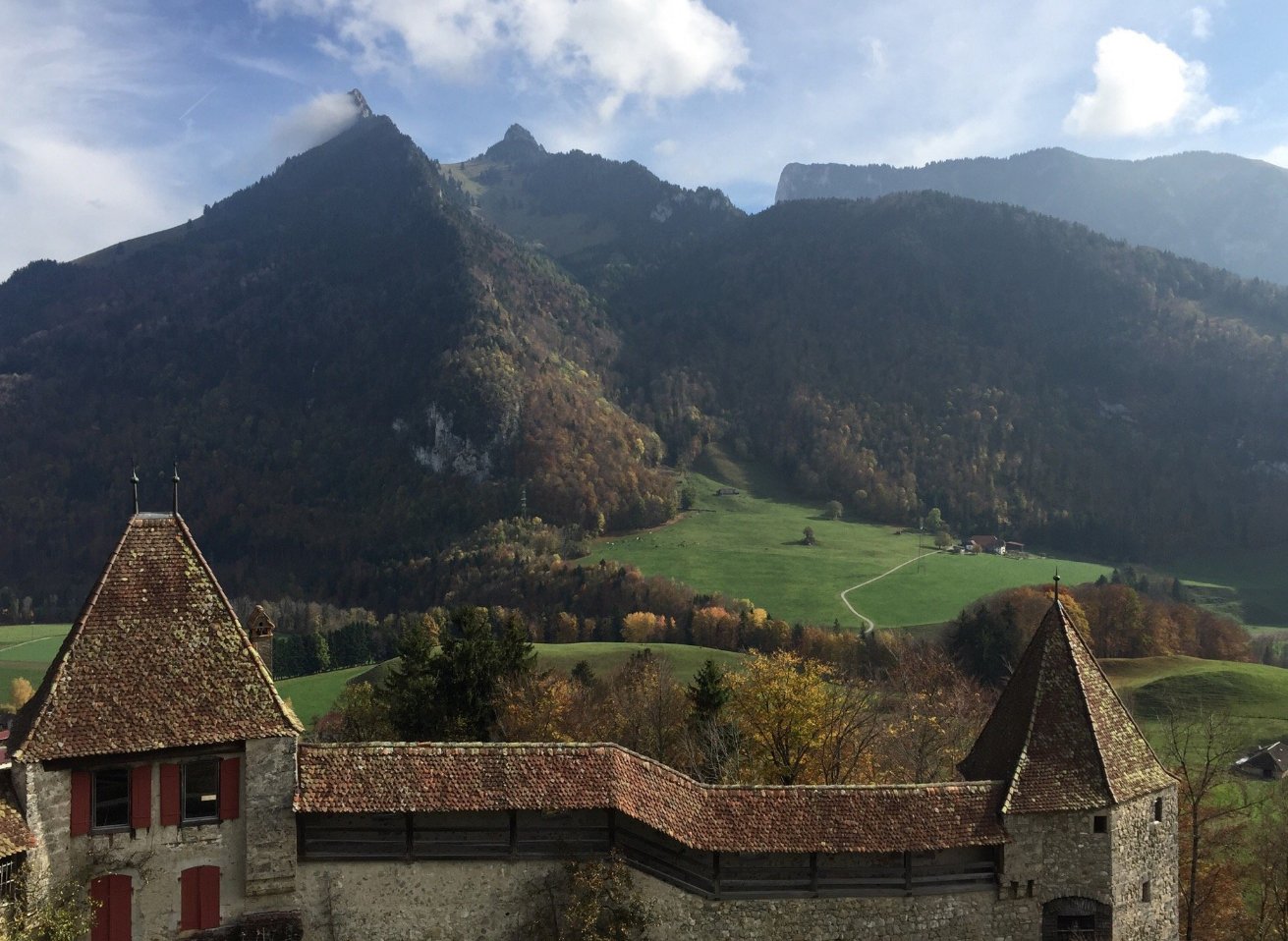
Gruyères Castle can be visited every day from 9:00 to 18:00 from April to October and from 10:00 to 17:00 from November to March. It is recommended to allow one hour for the tour. Website: www.chateau-gruyeres.ch.
Ticket prices:
- full – 12 CHF;
- teenagers (from 15 years) and students – 8 CHF;
- children (6 to 15 years) – 4 CHF;
- family (2 adults and 3 children) – 25 CHF;
- Children under 6 years of age are admitted free of charge.
Giger Museum
A controversial but certainly worthwhile attraction in Gruyères, Switzerland is the museum dedicated to the Swiss artist H.R. Giger, who painted in the style of fantastic realism.
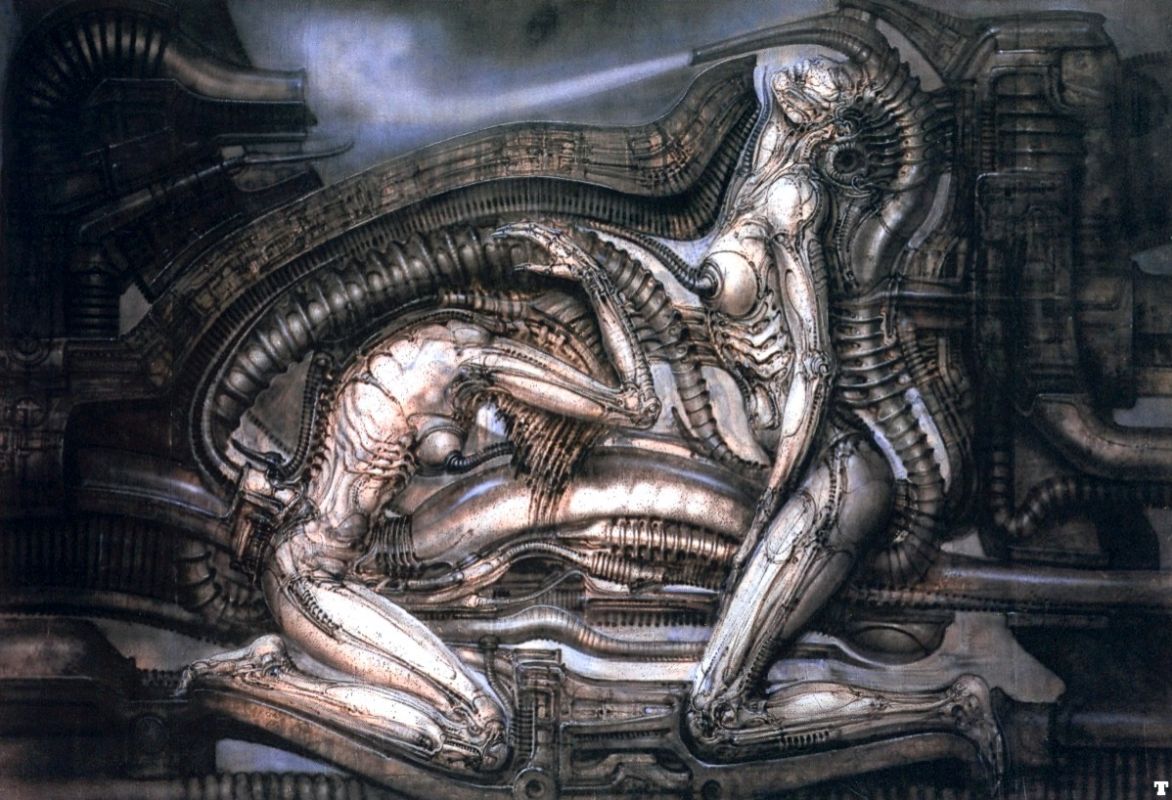
Fun fact! The Oscar-winning film Alien used Giger’s work, which earned the film an award for visual effects in 1980.
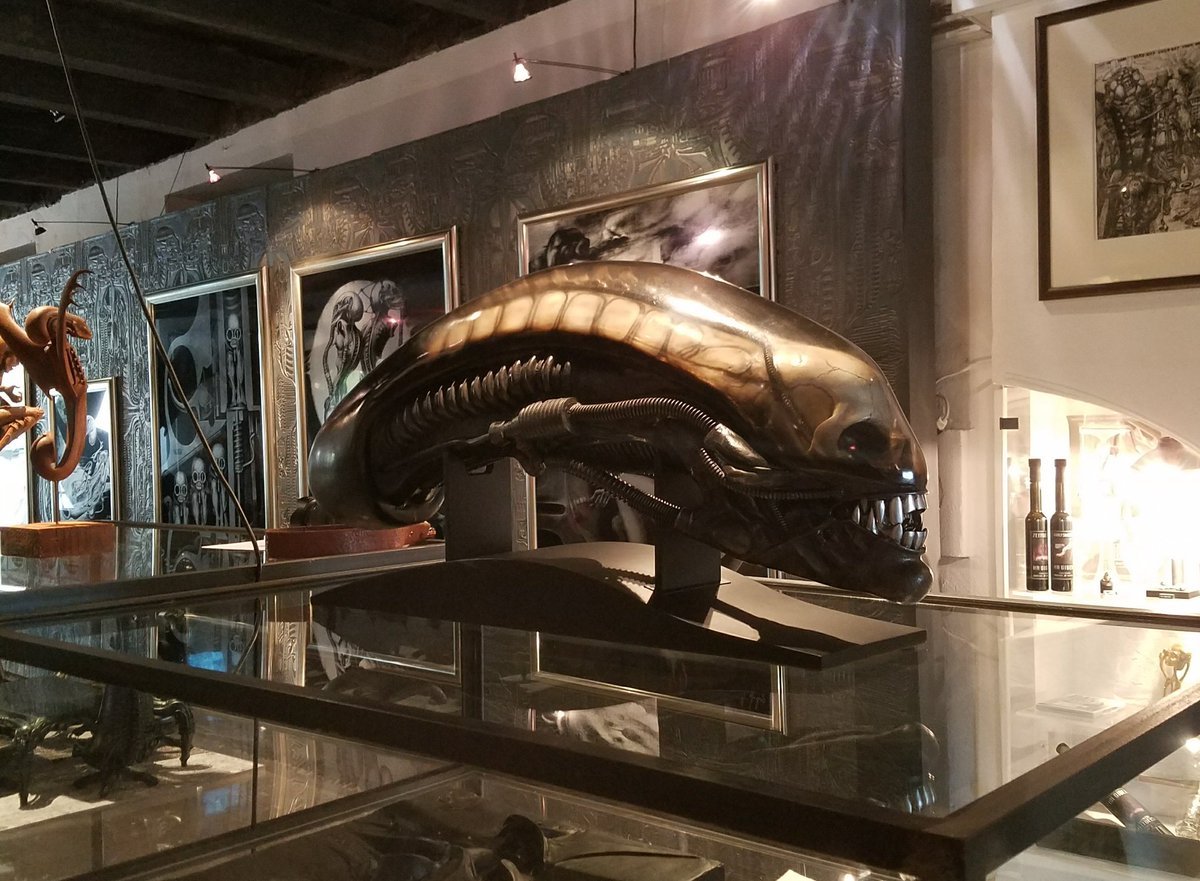
What a friend of the Swiss artist said about his work – his paintings clearly show where a person comes from and where he goes. The paintings help to revive biological memory, they take you to the very core of the human cell. The paintings demonstrate the genetic code and the process of protein synthesis.
In addition to paintings, the museum displays grotesques and sculptures, unusually shaped furniture, models for science fiction films, including the film “Alien”. In one of the halls there is a special place – a small exhibition, separated by a curtain, here are alien drawings. Guests over 18 years old are allowed here.
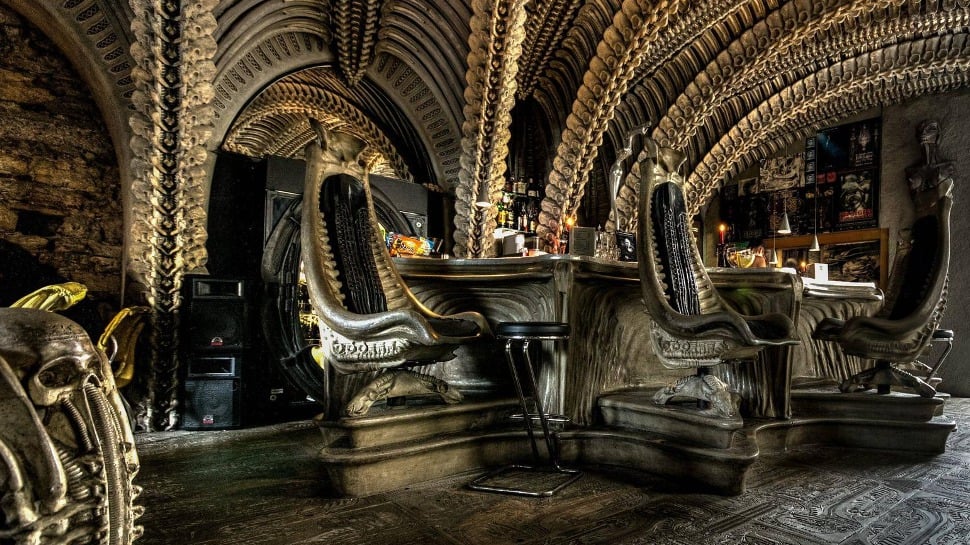
After visiting the museum, tourists head to the bar, where they serve delicious meringue and cappuccino. Fans of alcoholic drinks can order schnapps.
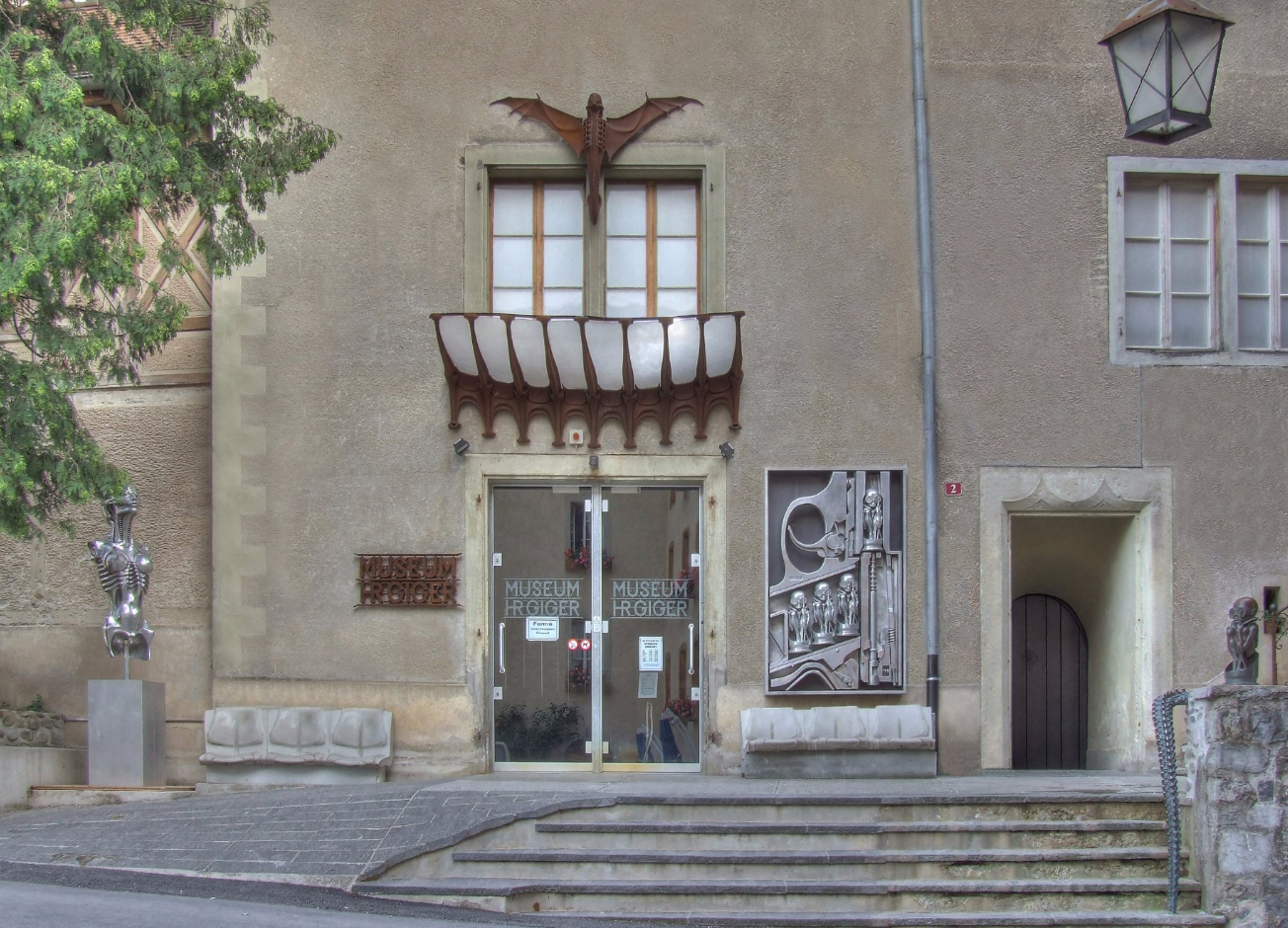
- The museum is located at: Château St. Germain.
- Opening hours: Monday through Friday – from 10:00 to 18:00, weekends – from 10:00 to 18:30.
- The bar is open daily from 10:00 to 20:30 (from November to March the bar is closed on Mondays).
- Ticket prices: for adults – 12 CHF, for students – 8 CHF.
- Website: www.hrgigermuseum.com.
Moléson Funicular
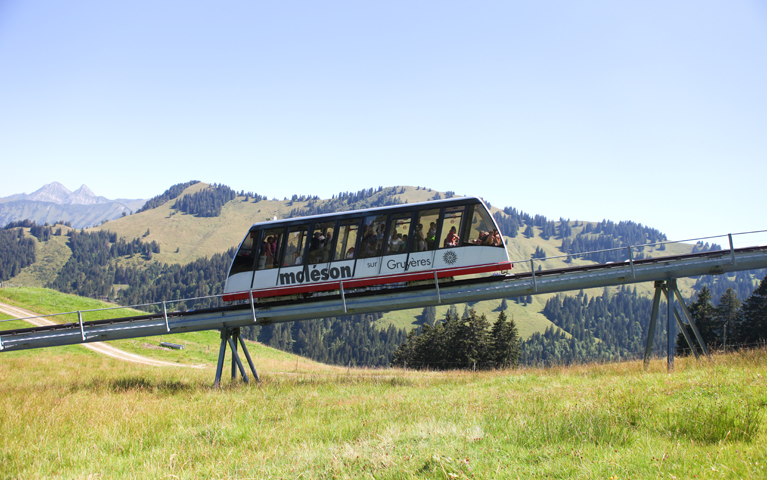
The funicular takes tourists to a height of 2 km, to the peak of Le Moleson. The trip takes no more than a quarter of an hour. You can have a snack on the way – one restaurant is open halfway and the second one is at the top.
You can climb to the top on foot, but in this case you will need comfortable, sports shoes and warm clothes – it is cold at the top. The climb takes a little more than an hour. Tourists note that the road is quite difficult, but comfortable – there are many cafes and toilets.
Good to know! Round trip – 35 CHF.
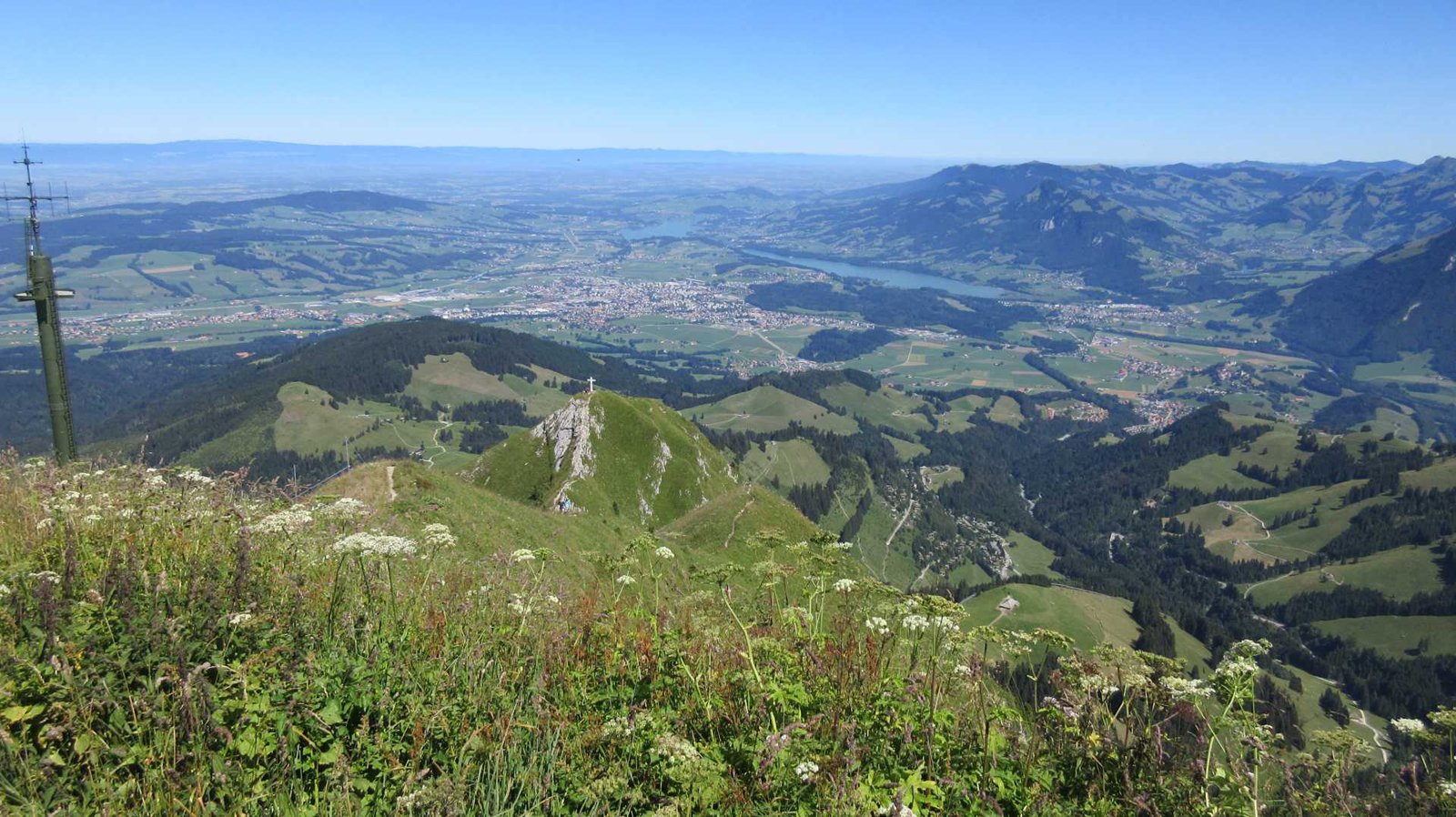
From the top there is a picturesque view of the entire French part of Switzerland – from Lake Geneva to Mont Blanc.
How to get to Gruyeres
The two easiest ways to get to the city are:
- by car;
- on the Chocolate Train, which departs from Montreux.
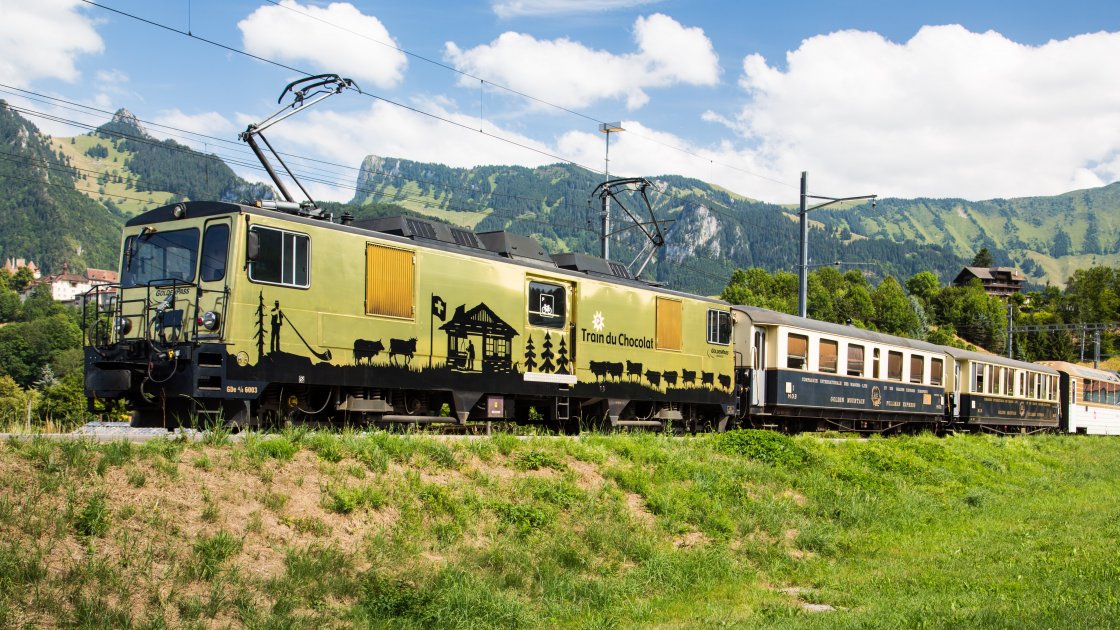
Other routes are longer and more complicated – you need to change trains in Fribourg and then in the village of Bull.
The route from Zurich takes 2 hours 30 minutes and involves two transfers:
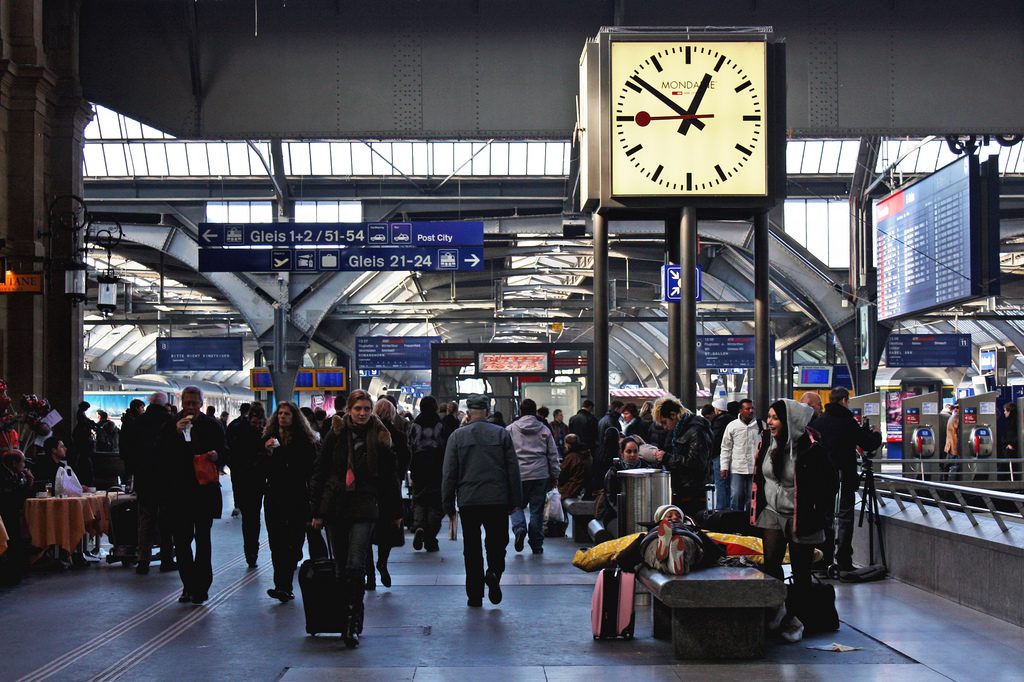
- First you need to take the Zurich HB – Fribourg train – departs every hour, travel time is about 1 hour 20 minutes;
- change to the Fribourg Gare – Bulle Gare bus, the journey takes just under half an hour;
- then take the Bulle – Gruyères commuter train, which takes only 5-6 minutes.
The total cost of a one-way trip is approximately CHF 56.8. Tickets can be purchased at www.sbb.ch.
Gruyères on the map of Switzerland stands out for its amazing landscapes and a special medieval atmosphere that has reigned here for seven hundred years. Despite its modest size, Gruyères (Switzerland) fascinates and captivates the most sophisticated tourists.
New Year’s Eve Celebrations in Switzerland: A Guide to Festive Activities

